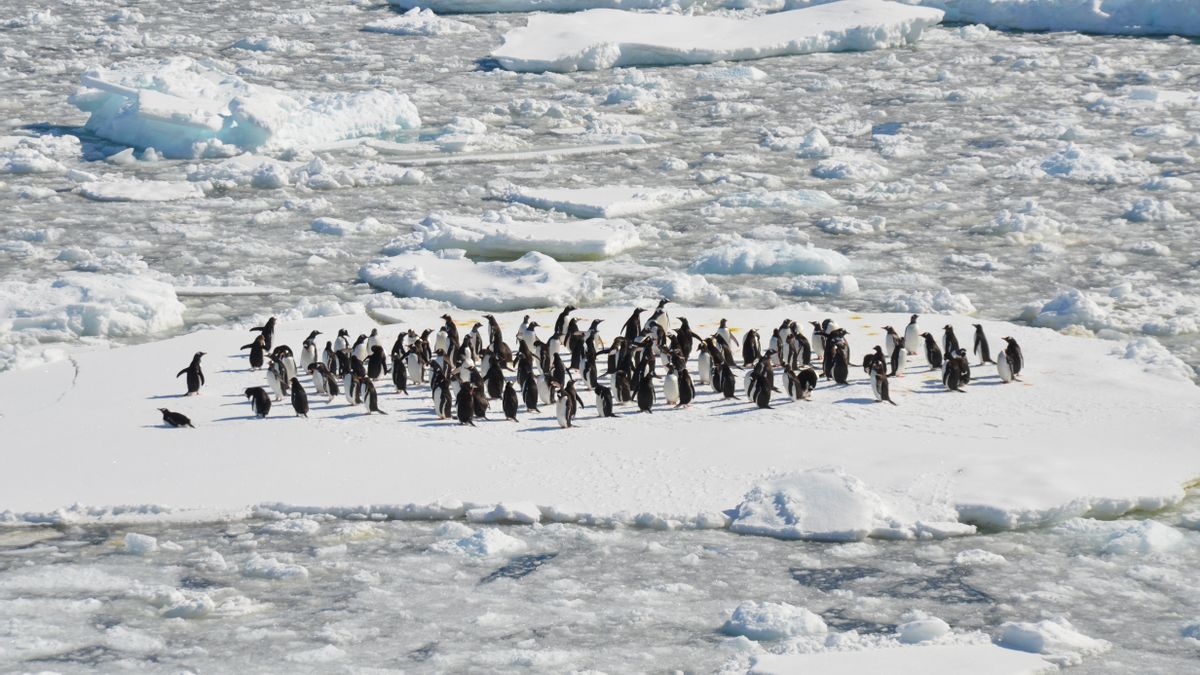JAKARTA - Usually the continent of Antarctica is covered with snow, but now the ice land is decorated with green. This is not an act of vandalism, but the appearance of green algae-type plants on a number of melting surfaces.
"A lot of people think Antarctica is just snow and penguins. In fact when you look at the fringes there is a lot of plant life," said the University of Cambridge principal investigator, Dr. Matt Davey as quoted by CNN International, Friday, May 22.
Antarctica is home to several types of algae that grow in humid areas of snow and absorb carbon dioxide from the atmosphere. Scientists from the University of Cambridge and the British Antarctic Survey have created the first large-scale map of microscopic algae plants on the Antarctic peninsula, published May 20 in the journal Nature Communications.
For information, algae plants provide important terrestrial carbon stores, likely to spread across continents due to increasing global temperatures. The researchers used European Space Agency (ESA) satellite data with measurements from Ryder Bay, Adelaide Island, the Fildes Peninsula and King George Island in Antarctica.
It is known that the blooming algae turns the snow surface into a bright green color in an extraordinary part of Antarctica that can be seen from outer space. The new map will provide a basis for assessing how quickly Antarctica is turning green as a result of climate change.
"As Antarctica warms, we expect the overall mass of snow algae to increase, because the spread to higher ground will be significantly greater than the loss of small patches of island algae," explained the paper's lead author, and a researcher at the University of Cambridge, Dr. Andrew Gray.
In fact, this type of algae is commonly found on small islands around Antarctica. The emergence of algae is also greatly influenced by local birds and mammals, whose feces are useful as natural, highly nutritious fertilizers to accelerate growth.
The research team also found that 60 percent of this green algae area was found near penguin nests. Researchers have also identified more than 1,600 green algae, with a distribution area of up to two square kilometers.
This equates to a carbon sink of about 479 tonnes per year, or the equivalent of the emissions of about 875,000 car trips. Not only the green algae were found by the research team, several samples of red and orange algae have also been taken for further research.
"Plant algae are a key component of the continent's ability to capture carbon dioxide from the atmosphere through photosynthesis," says Davey.
The researchers believe that global warming will further increase the growth of algae which could have a significant impact on the amount of carbon because more of these plants absorb more carbon. Others, it turns out that algae also interact with spores, namely fungi and bacteria, which according to Davey could be the beginning of a new ecosystem.
The English, Chinese, Japanese, Arabic, and French versions are automatically generated by the AI. So there may still be inaccuracies in translating, please always see Indonesian as our main language. (system supported by DigitalSiber.id)













